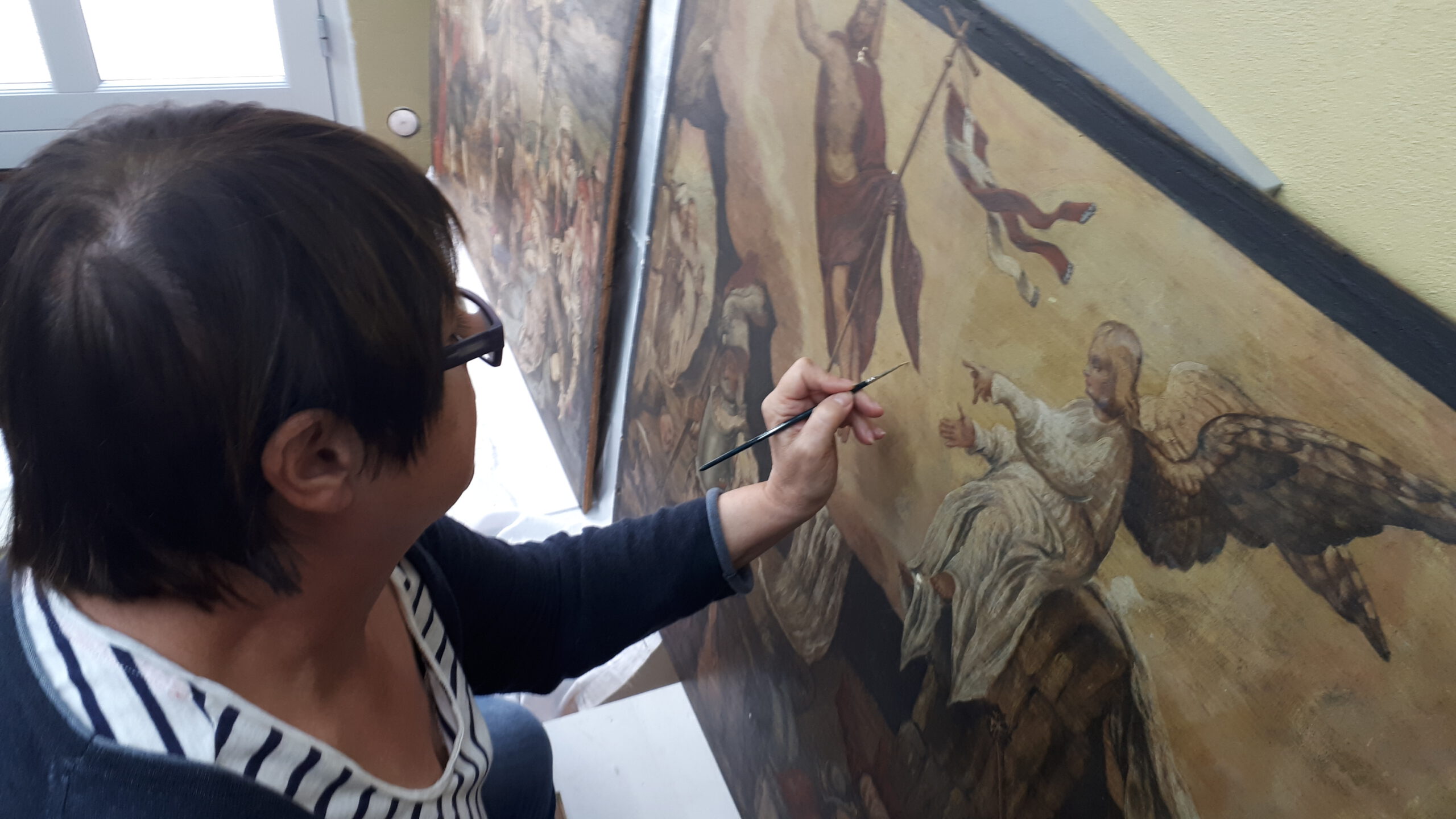| HERITAGE-PRO: Cultural heritage conservation requires a great many different disciplines to work together. In your long years of practice, have you actually observed changes in the management of the associated processes or are they still strongly hierarchically organized implementations?
Ursula Fuhrer: Both, that always depends on the people involved and their personal background, attitudes and own weightings. Overall, it is strongly hierarchically organized in implementations, which can sometimes take a different course within those who have been working together on the projects’ construction sites for a longer period of time – here there are agreements at eye level and in direct communication. The same applies to some employees of institutions with which we have been working for years. However, for decades I have been missing basic knowledge among project planners regarding the planning of the sequence of the implementation steps. It has sometimes serious effects on climatic conditions, dust and dirt development etc. Restorations of mobile art (which is worked on site) should always be the last work before completion. It is counterproductive, for example, if the floor is sanded down and slots for the electrical system are opened and then plastered again during this time, which was surprisingly often the case during my professional career. However, if our part of the work on site tends to be at the end of the restoration process, it can also mean that we have to be very flexible, as our assignment on site can easily be postponed for a few months if there are unexpected problems with previous work and there are delays. We are therefore experienced in flexible scheduling… |
| HERITAGE-PRO: You have taught many restorers and accompanied them on their professional careers. Are the interdisciplinary requirements sufficiently taken into account in the university education and further training courses?
Ursula Fuhrer: Looking back on my own training, this was not taken into account, at least not in my studies. However, since a 32-month basic internship was required before my studies (today it is shortened to 12 months), my fellow students and I were able to get to know at least some of the processes involved in the restoration of the interiors of large churches and/or in everyday museum work and gain experience during this time. When restoration students do an internship in our studio, they are involved in on-site work in churches, and we always point out conditions that are problematic for us. They also experience quick and direct arrangements with other trades. As far as I am informed about the teaching content of the individual courses, interdisciplinary collaboration still does not play a major role in the basic training. |
| HERITAGE-PRO: If you could wish for a good cooperation in cultural heritage conservation projects, what would be at the top of your wish list?
Ursula Fuhrer: Even before such a measure is taken, there is a meeting and an agreement with those involved. The first meeting should not take place on site and shortly before we start work. In any case: cooperation at eye level! HERITAGE-PRO: Thank you, Mrs Fuhrer!
Since 2000 she is self-employed in a studio community in Stuttgart. She had numerous professional stays abroad working e.g. in Rome and Jersey Channel Islands. Her teaching took place at Hochschule der Künste (University of the Arts) in Berlin, at the University of Applied Sciences (Hochschule für Technik und Wirtschaft) in Berlin and at Tainan National University of Arts in Taiwan. www.restaurierungszentrum-stuttgart.de (Picture credits: Ursula Fuhrer) |
“Cooperation at eye level makes the difference” – conservator Ursula Fuhrer on interdisciplinary project management
Please follow and like us:


